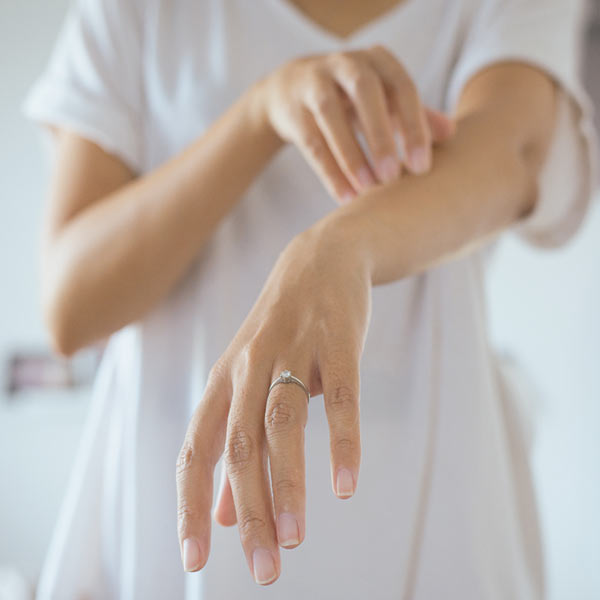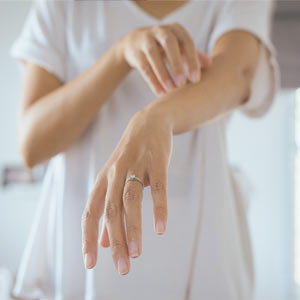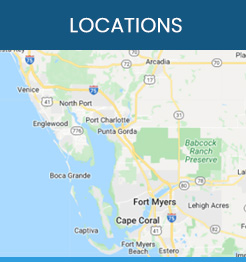Trigger Finger Surgery Specialist Q&A
Trigger finger is a medical condition that makes stretching and bending your fingers difficult. Trigger finger surgery is recommended if non-surgical treatments have not been successful in curing the condition. If you have any stiffness, catching, numbness, or discomfort in a finger joint, or if you can’t straighten or bend a finger, make an appointment to discuss treatment options. For more information, contact us or request an appointment online. We have convenient locations in Fort Myers, FL, and Port Charlotte, FL.


Table of Contents:
What is Trigger Finger?
What Causes Trigger Finger?
How is it diagnosed?
What are the treatments?
What are the results of the surgery?
Trigger finger, sometimes referred to as trigger thumb or stenosing tenosynovitis, is a very common and treatable problem. It can occur in both fingers and thumbs and is caused by an inflammation of the tendons in the palm of the hand, called the flexor tendons, that help the digits to bend. The symptoms of trigger finger can often be eased using non-surgical methods, but surgery is sometimes necessary. Some symptoms of trigger finger include:
Pain: Trigger finger may start with discomfort felt at the base of the affected finger or thumb and is often only present with activity such as gripping.
Swelling: Over time a lump may develop due to a nodular swelling within the tendon or the development of a benign, fluid filled cyst, called a flexor sheath ganglion.
Stiffness or loss of motion: A trigger finger may result in loss of the ability to bend or straighten the affected finger and can cause pain when trying to do so.
Movement: Abnormal sensations or movements that are often described as popping, catching, or locking can be caused by trigger finger and sometimes occur while bending or straightening the finger, or both. The pain can increase over time as the movement between the tendon and pulley becomes tighter.
Trigger finger, or tendonitis is a condition that results from thickening of the tendon in your palm which affects your fingers or thumb. It can often be alleviated with non-surgical treatment, though sometimes surgery is necessary. Tendons are rope-like structures that attach muscle to bone and allow you to bend your joints. This thickening results in pain and/or difficulty bending or straightening the finger or thumb. The symptoms include locking or clicking, pain, and stiffness (or any combination of these.) Occasionally, there is an actual lump in the palm that moves when you bend the finger. Trigger finger can be worse with heavy use of the hand or sometimes in the morning.
The finger is made up of strong supportive tissue, called ligaments, that connect bone to bone, tendons which attach muscle to bone and three bones called the phalanges. The tendons have an outer lining called tenosynovium, and these, in turn, are covered by thick, soft tissue called pulleys. The tendon and tenosynovium are designed to glide smoothly through the pulleys, rather like the line is held on a fishing rod. This system is designed to have exactly the right size of each component, and any changes can cause problems. Trigger finger is caused when this mechanism fails to operate properly and can occur if one of three things happens:
The tendon becomes enlarged and doesn’t fit through the pulley well.
The lining of the tendon becomes thicker and doesn’t fit through the pulley well.
The pulley becomes thicker and decreases the opening for the tendon.
Trigger finger can be caused by certain medical conditions such as rheumatoid arthritis, gout, and diabetes; repeated, strong gripping can also be a factor, but in most cases, the cause of the trigger finger is not known.
The symptoms are often seen in people who use their hands and fingers extensively. Needle work, heavy computer use, and other forceful, repetitious activities may also cause trigger finger. Trigger finger is commonly associated with diabetes, arthritis, and carpal tunnel syndrome. People may recall an injury to the hand, but usually there is no clear inciting event.
Trigger finger or trigger thumb is diagnosed by an examination by your physician. The location of the pain and swelling over the tendon below the affected digit in the palm is characteristic of trigger finger. Some patients may experience a ‘click’ or stiffness in the finger itself, the joints, or even at the tip of the finger or thumb.
Trigger finger is often successfully treated with a cortisone injection into the area adjacent to the tendon. The application of ice several times a day after the injection is also an important part of trigger finger treatment. If the injection is not effective or the symptoms recur, trigger finger surgery may be recommended.
Trigger finger surgery is also known as trigger finger release. It is performed through a small incision in the palm of your hand at the base of the affected digit. The sheath around the tendon is opened to enlarge the space for the tendon and the small incision is usually closed with only one small suture.
Dr. Helgemo usually perform trigger finger surgical procedures in the office. The safety and efficacy of the procedure itself are enhanced by performing the trigger finger release in the office under local anesthesia. In many cases, the results are immediately apparent – your finger clicks, and in a few minutes the clicking is gone. The time spent at the office is trivial compared with time spent when this is performed in the operating room. An additional advantage is that the cost of conducting this trigger finger treatment in the office is significantly less than when performed in the hospital.
After trigger finger release, the increased space around the tendon allows the swelling to resolve and the pain and clicking should be relieved. Prescription pain medication is not needed. Normal activities, except those that require forceful gripping, lifting, or repetition can be resumed immediately. At about a week after surgery you will be seen by one of our clinical staff or a hand therapist in your area to remove the single suture and provide instruction for rehabilitation and post-surgical use.
Complications with trigger finger surgery are very uncommon and include infection, scar tenderness, stiffness, and pain. Recurrence of the trigger is highly unlikely, but, like any surgical procedure, is possible.
Surgery for trigger finger, as with many conditions, is considered if non-surgical treatments, such as over-the-counter pain or anti-inflammatory medications; steroid injections; splinting at night or modifying activities, haven’t worked.
The aim of surgery is to open the pulley at the base of the finger, increasing the space and allowing the tendon to glide more freely. This increased space reduces the swelling, and the pain and clicking should be relieved. Normal activities, except those that require forceful gripping, lifting, or repetition can be resumed immediately, and prescription pain medication is not usually required. After about a week the single suture will be removed, and instructions given for rehabilitation and post-surgical use. There may be some ongoing, persistent stiffness following surgery even if there is no more locking, and post-surgical hand therapy can help in mitigating this. There may be some mild to moderate tenderness at the incision site for a few months after surgery, but most people return to their normal activities within a few weeks. As with any surgical procedure, complications (such as infection, scar tenderness, stiffness, and pain) are possible, but with trigger finger surgery these are, fortunately, rare. We are an advanced medical facility dedicated to the treatment of hand and arm conditions with locations in Port Charlotte FL and Fort Myers FL and are proud to serve patients statewide. Call us or schedule an appointment today! We serve patients from Port Charlotte FL, Fort Myers FL, Punta Gorda FL, Cape Coral FL, Lake Suzy FL, Estero FL, Murdock FL, Charlotte Harbor FL, Harbour Heights FL, and Solana FL.


Additional Services You May Need
▸ Carpal Tunnel Syndrome
▸ Basilar Joint Arthritis
▸ Trigger Finger
▸ Dupuytren’s Contracture
▸ DeQuervain’s Tendonitis
▸ Ganglion Cysts
▸ Cubital Tunnel Syndrome
▸ Lateral Epicondylitis
▸ Small Joint Arthritis
▸ Wrist Pain
▸ Scaphoid Fracture Treatment
▸ Flexor Tendon Injuries Treatment
▸ Hand Tumors Removal Surgery
▸ Work Related Hand Injuries







